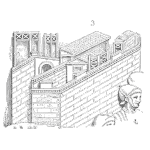
The connection between the specifications or drawings or design requirements and the manufacturing process is the capability of the process to consistently create items within spec.
A ratio of the specification over the spread of measured items provides a means to describe the process capability.
The ratios rely on the standard deviation or spread of the produced items. The index is meaningful only if the process is stable. Thus beyond making sure the measurements have minimal measurement error, check the stability using the appropriate control chart.
In this article we are assuming the measurements are normally distributed, yet knowing that is not always the case, you can calculate capability indices using the actual distribution.
The indices will have similar interpretations yet take care when applying these concepts using other than normal distribution data.












